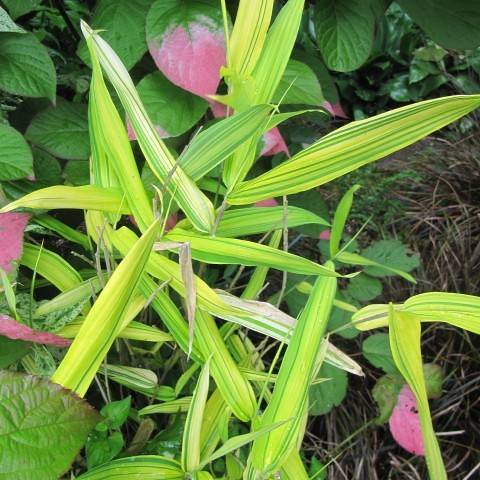
kamuro-zasa
Pleioblastus viridistriatus
Cycle:
Perennial
Watering:
Average
Hardiness Zone:
6 - 10
Flowers:
Flowers
Sun:
Full sun,part shade
Leaf:
Yes
Growth Rate:
Low
Maintenance:
Moderate
Drought Tolerant:
Yes
Salt Tolerant:
Yes
Invasive:
Yes
Care Level:
Medium
watering
Kamuro-zasas should be watered twice a week. When watering, lightly moisten the soil with lukewarm water (around 77-85 degrees Fahrenheit). The soil should remain damp, but not soggy. Allow it to dry partially between waterings. During the hot summers, increase the frequency of watering slightly to keep the soil moist but not sodden. During the cold winter months, reduce the frequency of watering. Do not allow the soil to dry out completely during this time.
sunlight
Kamuro-zasa (Pleioblastus viridistriatus) is a small, feathered-leaf bamboospecies that is native to East Asia. It usually grows in shady forests, but it can also adapt to full-sun exposure. It needs at least 3 to 4 hours of sunlight per day, although it can tolerate up to 6 to 8 hours of direct sunlight. It should be protected from extreme heat and direct afternoon sunlight during the summer months. Ideally, it should be grown in an area where it gets morning sun and afternoon shade.
pruning
Kamuro-zasa can benefit from a light pruning once a year. The best time for pruning is in the early spring months. It is important not to prune too aggressively, as Kamuro-zasa tends to respond with a decrease in growth. After pruning, a light fertilization may boost new growth and help maintain a stronger, healthier plant. Always take care when pruning and avoid cutting back too much, as this could cause damage to the foliage.
